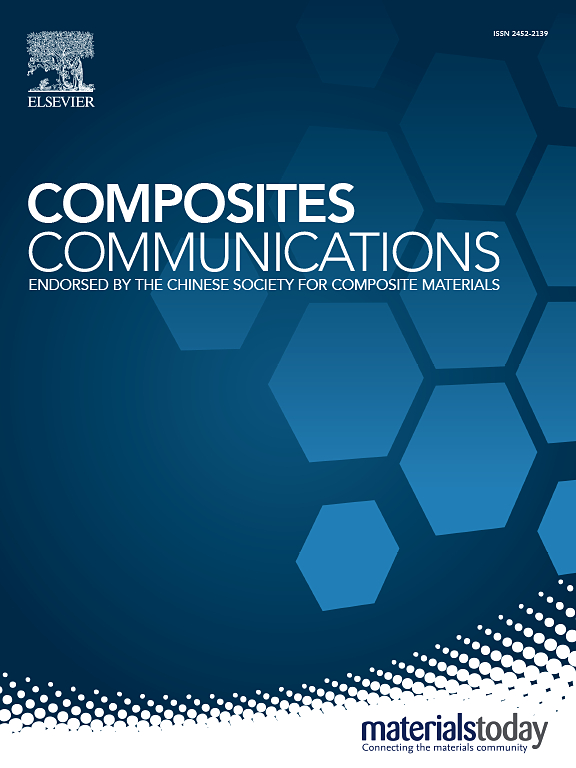Synergistic effect of recycled PET and hyperbranched ionic liquids for toughening epoxy resin
IF 6.5
2区 材料科学
Q1 MATERIALS SCIENCE, COMPOSITES
引用次数: 0
Abstract
Improving the toughness of epoxy resins is critical for high-performance applications. In this study from molecular structure design, hyperbranched ionic liquids (HBIL) containing imidazole groups were synthesized through a one-step esterification method. These HBIL were subsequently combined with recycled polyethylene terephthalate (PET) to synergistically enhance the toughness of epoxy resins (EP). The mechanical, thermomechanical, and rheological properties, as well as the curing behavior of the epoxy composites, were systematically evaluated. The addition of HBIL reduced the viscosity and curing temperature of the epoxy composite. The impact strength of the epoxy composites with only 6 phr PET was increased from 6.48 kJ/m2 to 18.19 kJ/m2. Furthermore, the addition of HBIL exhibited a synergistic effect with PET. The epoxy composites added with 6 phr PET and 4 phr HBIL showed an increase in impact strength, elastic modulus, and flexural modulus by 237 %, 28.5 %, and 12.4 %, respectively, and an increase in the glass transition temperature (Tg) by 5.8 °C compared with pure EP. Molecular dynamics (MD) simulations corroborated these experimental results, providing insight into the improved properties. This study introduces an innovative approach to developing epoxy composites with superior performance characteristics.

求助全文
约1分钟内获得全文
求助全文
来源期刊

Composites Communications
Materials Science-Ceramics and Composites
CiteScore
12.10
自引率
10.00%
发文量
340
审稿时长
36 days
期刊介绍:
Composites Communications (Compos. Commun.) is a peer-reviewed journal publishing short communications and letters on the latest advances in composites science and technology. With a rapid review and publication process, its goal is to disseminate new knowledge promptly within the composites community. The journal welcomes manuscripts presenting creative concepts and new findings in design, state-of-the-art approaches in processing, synthesis, characterization, and mechanics modeling. In addition to traditional fiber-/particulate-reinforced engineering composites, it encourages submissions on composites with exceptional physical, mechanical, and fracture properties, as well as those with unique functions and significant application potential. This includes biomimetic and bio-inspired composites for biomedical applications, functional nano-composites for thermal management and energy applications, and composites designed for extreme service environments.
 求助内容:
求助内容: 应助结果提醒方式:
应助结果提醒方式:


